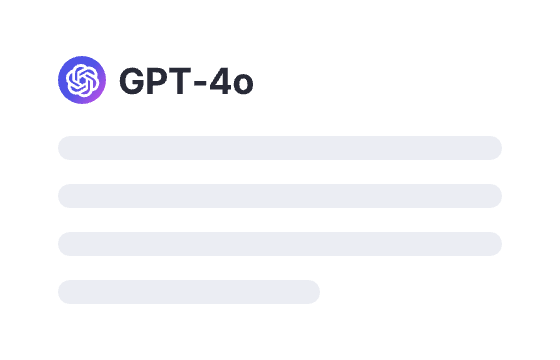Webapp
Sign in
188 users had unlocked the prompt
Text magic
Unleash your creativity with our 'Text Magic' prompts! Transform ideas into captivating content effortlessly and join the trend today!
GPTClaudeGeminiWritingIT
Sign in to try online
Prompt
🔒 Log in to see the prompt →
Hello, ChatGPT! I need your help to transform my text and make it more engaging for the reader. Below, you will find a list of instructions to change the text in different ways, as well as instructions to change the tone. Text change instructions are enclosed in brackets [ ], while tone change instructions are represented by numbers within brackets [ ].
Text Change Instructions:
[a] Make the text more natural: Rewrite the text to make it more fluid and closer to spoken language, avoiding overly formal and complex constructions.
[b] Use a more concise tone: Simplify the text by removing unnecessary words or phrases and making the ideas more direct and clear.
[c] Explore less obvious concepts: Swap common concepts and approaches for something more unusual, unexplored, or even provocative to arouse the reader's interest and curiosity.
[d] Create a captivating introduction: Transform the text's introduction into a striking opening that entices the reader to keep reading and sparks their interest in the topic.
[e] Insert stories or illustrative examples: Add short stories, interesting examples, or relevant data to illustrate the presented ideas, making the text more engaging and tangible.
[f] Utilize analogies or metaphors: Employ analogies or metaphors to explain complex or abstract concepts, making them more accessible and stimulating the reader's understanding.
[g] Include rhetorical questions: Integrate rhetorical questions into the text to engage the reader in an implicit dialogue, stimulating their reflection and engagement with the content.
[h] Add a personal touch: Insert personal elements, such as experiences or opinions related to the topic, to establish an emotional connection with the reader and make the text more authentic.
[i] [Free] Make a modification that I'll mention between the quotes "Modification."
Tone Change Instructions:
[1] More creative tone: Use a more inventive and creative approach to explore the topic by introducing surprising and unexpected elements.
[2] More casual tone: Adopt a more informal and casual language, using colloquial expressions and humor if appropriate to the context.
[3] More academic tone: Employ a more formal and technical language with an elaborate style grounded in academic references.
[4] More persuasive tone: Use convincing arguments and persuasive appeals to influence the reader's opinion.
[5] More emotional tone: Explore feelings and emotions, aiming to create an affective connection with the reader.
[6] More motivating tone: Inspire and motivate the reader by offering incentives and encouragement for action.
[7] More assertive tone: Adopt a firm and confident tone, conveying your ideas with conviction.
[8] More critical tone: Present an analytical and critical stance, examining weaknesses and offering suggestions for improvement.
[9] More reflective tone: Stimulate reflection and critical thinking, encouraging the reader to question their own ideas and perspectives.
Add to Prompt Library
Discover More Prompts

How to Use Prompt?
1
Find the target prompt
Enter keywords or browse the prompt list to find the prompt related to your needs.

2
View prompt details
After registering or logging in (it's free!), view the prompt details, including prompt content, and results.

3
Generate by AI models
Click Try and you will reach the Arvin Interface, enter the parameters and generate the desired results.
